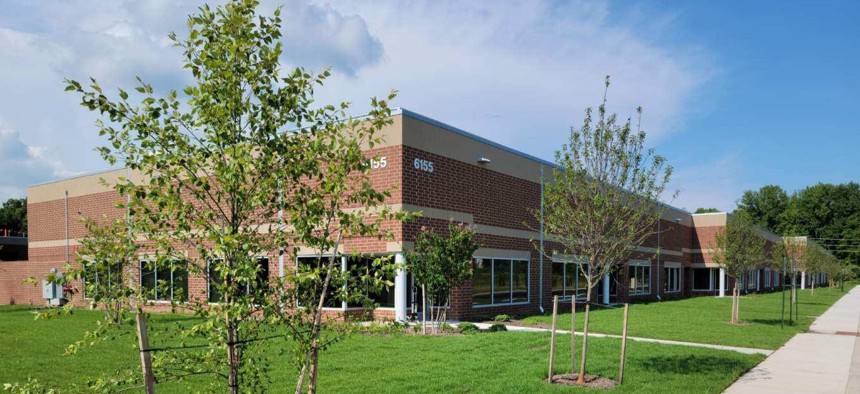New Aberdeen Proving Ground Facility Aims to Speed Up Fielding Tech

A 42,000 square foot innovation facility on the Aberdeen Proving Grounds. Photo by Klas Government
Work there will support DOD’s new Integrated Visual Augmentation System, Klas Government confirmed.
Communications equipment provider Klas Government is set to open and maintain a 42,000 square foot integration-driving facility at Aberdeen Proving Ground in Maryland, intended to speed up soldiers’ fielding and use of modern military technologies.
The Defense Department, Klas and other industry officials will host a ribbon-cutting ceremony on Aug. 25 to unveil this new hub. Through it, they hope to help break down tech-development silos spanning Army and other military programs.
“The big picture is to create an environment where the most complex and cutting-edge technology can be tested, integrated and shipped with a high level of confidence around the world to support the DOD’s mission of fielding the best technology to our troops,” Klas Government Chief Revenue Officer Chris Ericksen told Nextgov Monday. “Klas hopes to work closely with the government to speed up fielding, do so with a high level of confidence in the quality of the fielded units and work to show how different and complementary programs can work together to ensure the systems are interoperable and crucially take advantage of the benefits of each other to provide more capabilities with less weight to the troops.”
The Virginia-based company produces rugged, low-size weight and power, or SWaP, deployable tools for communication purposes to the government and U.S. partner nations. At the APG facility, it will provide tactical hardware and help facilitate solution integration.
The facility’s formation traces in many ways back to Klas’ desire to offer more services and capabilities to its Army customers, according to Ericksen. Initially, the company focused on larger programs at or near the proving ground in Maryland.
“As we were evaluating different locations, Klas saw the value of having a facility on base, which would provide easy access for our government customers to interact with us and our industry partners as well as other programs who were integrating technology onsite,” he explained.
The big building will feature both warehouse and office space.
It will house an array of integration work for different programs—including for the Defense Department’s high-profile new Integrated Visual Augmentation System, or IVAS, which is slated to provide the Army with next-generation augmented reality capabilities. Klas will provide the actual kitting of various IVAS components, and steer testing. “Some of the cool components deal with the actual kit itself, providing next-generation virtual reality technology to each soldier and doing so at scale to accommodate the ambitious goals tied to the fielding schedule,” Ericksen confirmed. He added that the team also plans to bring in other programs for integration, and particularly, ones that may require integrating kits on other platforms including vehicles.
“With IVAS adding so much more capability to the Army and to the soldier, it’s important to highlight the value that is brought to the programs as they continue to find ways to take advantage of this tech,” Ericksen said. “This location allows for that to happen in an ‘on-base, easy to access’ environment, where true collaboration between industry and government can take place.”
The move will also likely present opportunities for the Army to interact with stakeholders in a more dynamic way as it pursues integrating sophisticated, emerging technologies into its architecture. There could be new chances, Ericksen noted, for briefings, proof of concepts, and pushing forward of technology through CRADAs—all in a single location where necessary gear and equipment are available to interact and test with early into development.
“This will and should allow the Army to take advantage of all the improvements made to the tech before it’s in a full-rate production environment,” he said.






